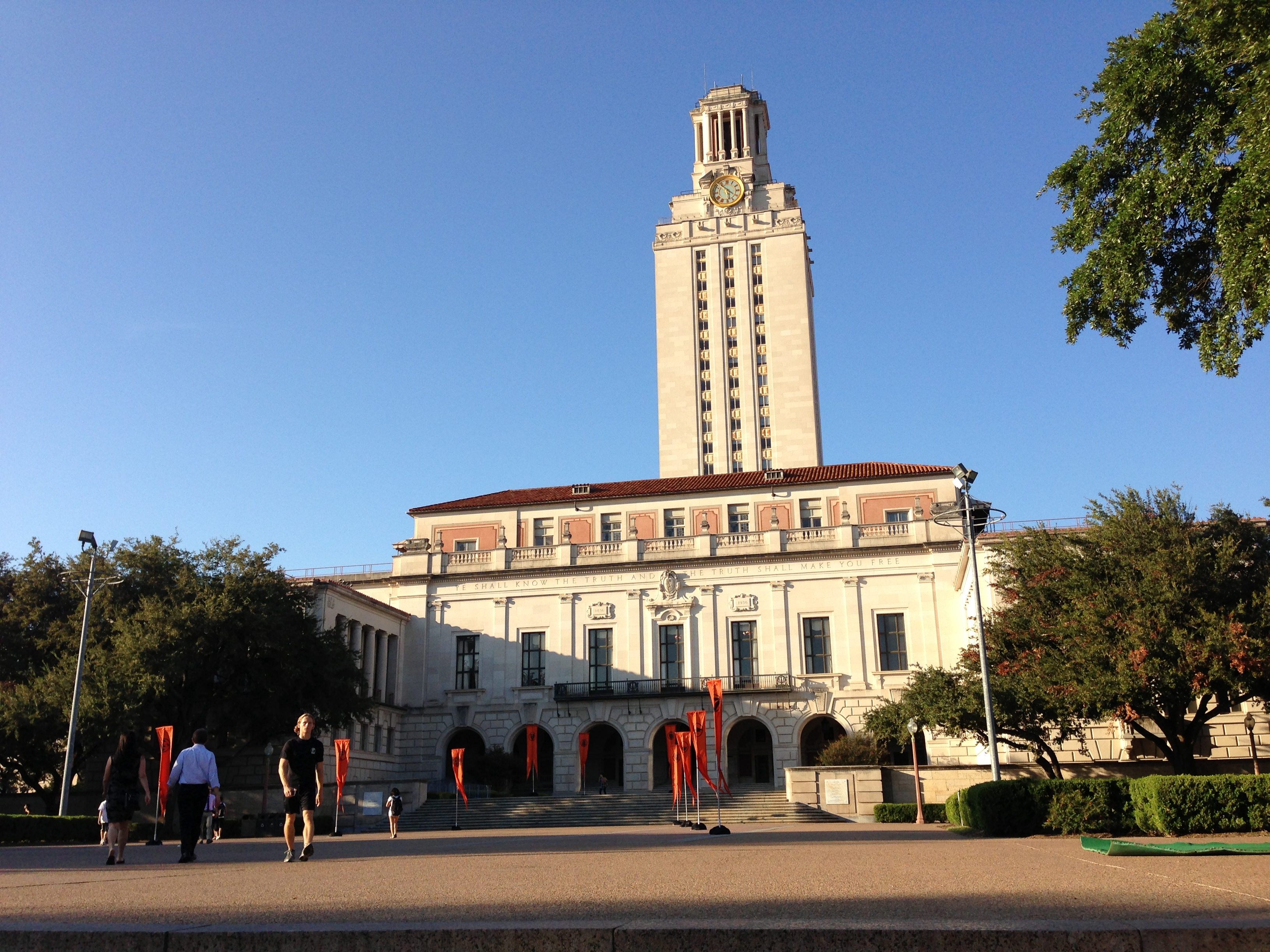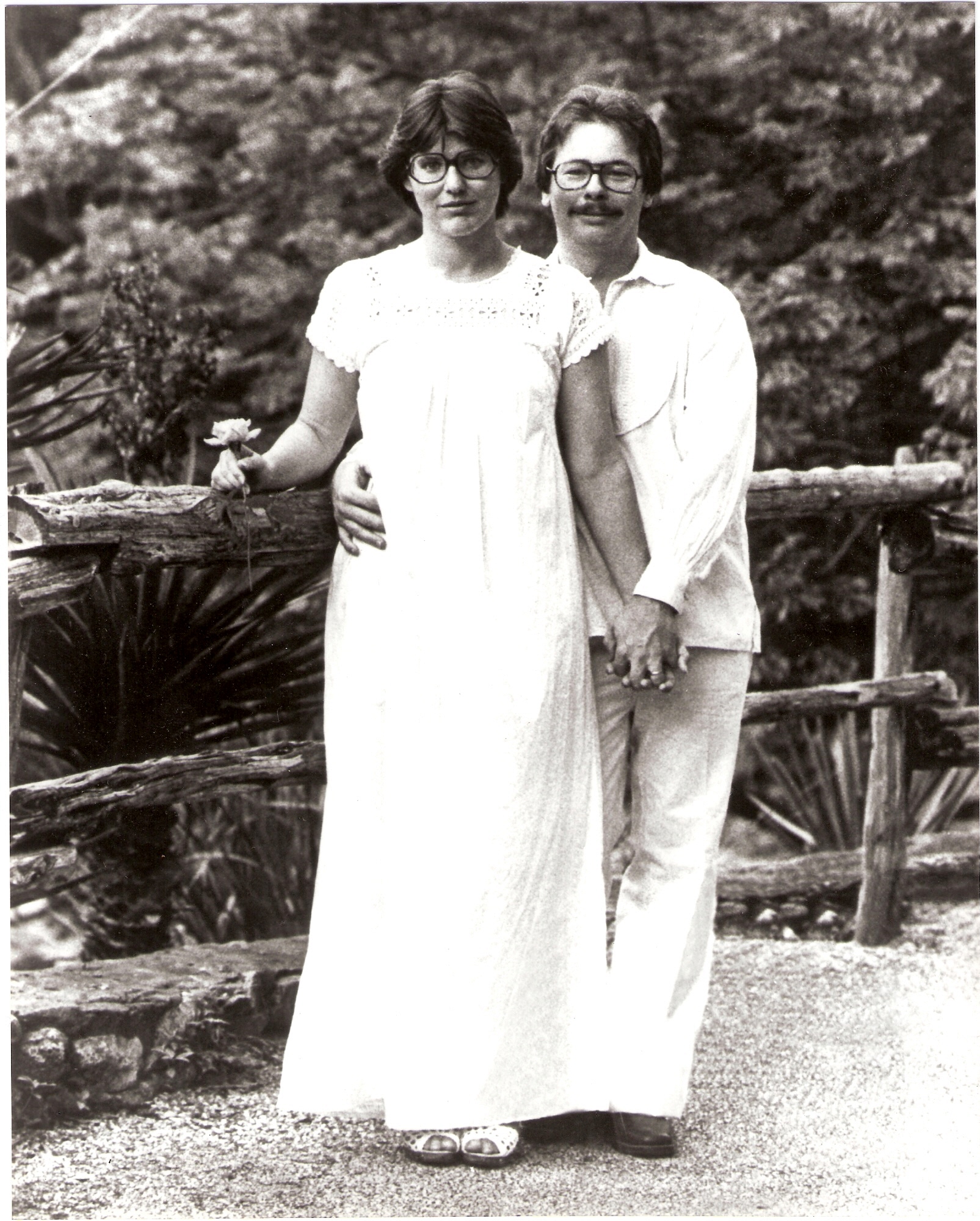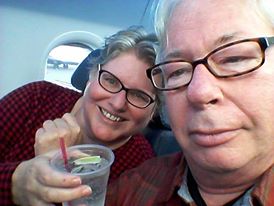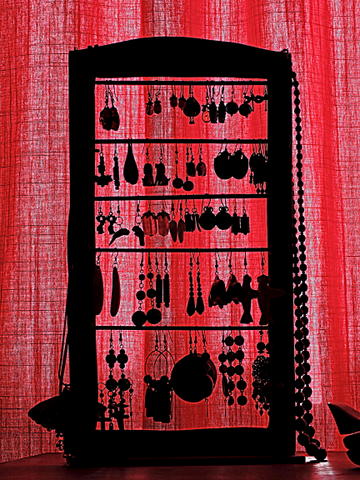
Photo courtesy of Wikimedia Commons
On Aug. 1, 1966, I was working a summer job between my sophomore and junior year in college. I worked late-night shift as a janitor in an office building in downtown Tulsa. That night the rest of crew, all working class folk, turned to me, the college boy, to explain what the hell happened in Texas that day.
Charles Whitman, an ex-Marine and student at the University of Texas at Austin stabbed him wife and mother to death in their respective beds, then later that morning he sneaked an arsenal to the top of the iconic UT clock tower. And at about noon, he began firing with a high-powered rifle from the observation deck 307 feet above ground, picking off human targets with stunning accuracy. Ninety minutes later, his murderous spree ended as two Austin police officers and a civilian kicked through a barricaded door and killed him. Whitman had killed 14 dead and 32 wounded.
Whitman ‘s rampage sent shockwaves across the nation. We were not used to mass murders then, certainly not on a university campus. As we gathered in the lunchroom, my janitor colleagues asked me with worry in their eyes why? Why would a young man kill his wife and mother and then casually pick off strangers from a sniper’s roost?
I had no answers. It was alien territory for me. The university life I knew involved studies, drinking beer and thinking about women. No one I knew wanted to murder anyone.
Twenty years later, as a reporter for the Dallas Morning News, I had the opportunity to revisit Charles Whitman’s day of terror in Austin. I read the police investigation report and Whitman’s journal as he recorded his decline into madness.I read the university psychologist’s report on Whitman and read his autopsy. I visited with victim’s families, with survivors, with school officials, with those who had been on campus, with law enforcement officers, and with the police officer who killed Whitman. None of them ever fully recovered from their encounter with Whitman. As they walked across campus, they still looked up at the tower, looking for shadows along the observation deck. I learned many things. But I never figured out why.
Now it is the 50th anniversary of that terrible day. We’ve seen many, many more incidents of mass killings across this country, far too many of them on school campuses. There will be many 50th anniversary commentaries. I have nothing new to add. But I am including my two reports from 1986. I hope it adds something to the conversation.
SNIPER’S 20-YEAR-OLD LEGACY HAUNTS AUSTIN (PART I)
David McLemore
AUSTIN — The shooting was an inexplicable burst of violence 20 years
ago. But it introduced to Austin a new and terrible age.
After Charles Joseph Whitman unleashed his demons Aug. 1, 1966,
life was never so simple, people never so trusting. After Whitman, all
that could be expected was the unexpected.
Shortly before noon on Aug. 1, 1966, Whitman, a 25-year-old
University of Texas student, stood with a hunting rifle in the clock
tower 335 feet above the campus. He began firing with uncanny accuracy
at the people below.
In 99 minutes, before police gunned him down, Whitman killed 14
people and wounded 31 others. Twelve hours before his shooting spree
began, he had fatally shot and stabbed his mother and savagely stabbed
his wife to death.
That day, people in Austin began living with the edgy awareness
that the blond former Eagle Scout, the dutiful son, the all-American
boy who smiled politely and worked hard, could, in an instant on a
summer day, turn killer.
Twenty years later, when a car backfires on Guadalupe Street, eyes
look up to the Tower.
Morris Hohmann, 50, sits in his office at Hyltin-Manor Mortuary. Now
he owns it. Twenty years ago, as an ambulance driver, he answered a
police call for a shooting at the UT campus.
“From that day, I better realized there is such a thing as
mortality,’ Hohmann said. “Since then, I’ve given thanks every day for
another day.’
His first run to UT was uneventful. “All I knew was someone had
been shot. When I got the body back to the hospital, I suddenly
realized the magnitude of the situation.’
A second call sent Hohmann to Sheftall Jewelers, then at 23rd and
Guadalupe streets. “Sheftall’s front door was shattered by gunfire and
people were bleeding inside,’ Hohmann said. “We were directed around to
the rear. I stayed outside the truck and guided it around the corner; I
lost my cover. That’s when I got it.’
Hohmann said two shots were fired at him. One shattered a car’s
windshield. While he was running, the other shot struck him above the
right knee. Hohmann rolled under the car with the shattered windshield,
where he lay bleeding for an hour.
“I wasn’t really afraid of dying right then,’ he said. “My biggest
concern was loss of blood. I remember laying in the heat, listening to
gunfire and two workers 30 feet away arguing which one would try to
rescue me. Finally, they both did.’
Hohmann was taken to Brackenridge Hospital in his own ambulance.
Doctors told him a 6mm hollow-point bullet had exploded on impact,
shredding a vein up into his thigh. There was no permanent damage. “It
wasn’t my time,’ Hohmann said. “Somebody besides the sniper was looking
down at me through that scope.’
In his desk, Hohmann keeps a 6mm cartridge casing police retrieved
from the Tower that day. “I never really give Charles Whitman a
thought,’ he said. “But it’s funny that of all the things I’ve done in
my life, getting shot by him is what I’m best remembered for.’
An amazing amount of information was accumulated about Charles Joseph
Whitman. But few ever saw it. For nearly 20 years, the investigation
files on Whitman by the Austin police, the Department of Public Safety
and the FBI were sealed at the suggestion of the Travis County grand
jury. They have only recently been made public.
This much is known. Whitman was born June 24, 1941, in Lake Worth,
Fla. His mother, Margaret Whitman was an unassuming woman devoted to
the Catholic church. His father, Charles A. Whitman, a plumbing
contractor, is remembered by neighbors as an egotistical, overbearing
man, a disciplinarian who pushed his three sons to succeed. Especially
Charles Joseph, the oldest.
Beneath the son’s exterior as a dutiful and obedient son, Whitman
harbored a growing hatred for his father.
Charles A. Whitman now lives in Lantana, Fla., where he is a
plumbing contractor. Margaret and Charles Joseph Whitman are buried in
nearby Lake Worth. The elder Whitman has been married to his current
wife, Betty, since 1967.
“I was never aware Charlie felt that way about me,’ he said in an
interview earlier this year. “I’ve thought and thought on it for 20
years why he hated me, why things happened as they did.’
The elder Whitman acknowledged that he was strict with his three
sons and that he was a domineering person. “But I wasn’t all bad,’ he
said. “Daddies aren’t worth a damn if they don’t want their kids to be
better than what they are.’
Whitman grew up a good student and an obedient son. Neighbors
remembered him as the all-American boy. He hunted with his father. He
was an altar boy. His father became a scoutmaster and Whitman became an
Eagle Scout at 12, the youngest in the world. At age 14, he wrote his
autobiography, the handwriting neat and precise.
On a summer day in 1986, the mall below the clock tower is awash in
students. Some sit in the shade, reading. Others stop to talk with
friends, waiting for classes to begin. Above them, the carillon bells
in the Tower ring out the quarter-hour.
“Every day, I walk through the mall and look up at the Tower.
Sometimes I wonder where people hid, what it must have been like,’ said
Carla Noren of Round Rock. An 18-year-old freshman, she wasn’t born
when Whitman moved quickly around the observation deck, killing people.
“It’s something I heard all my life,’ Miss Noren said. “I can’t
help but wonder about it. You wonder, could it happen again?’ The Tower
was closed to the public in 1975, and officials cited security
concerns. Last February, an attempt by students to briefly reopen the
Tower failed.
Whitman‘s rampage is little more than history for Chris Lansford,
18, of Houston. “My dad was a student here then. He had to take cover
in the sun for an hour. Sometimes, he’d talk about it at the dinner
table,’ Lansford said. “If it had been my friends shot at, I’d be
freaked out. But really, no one thinks much about it now.’
SNIPER’S 20-YEAR-OLD LEGACY HAUNTS AUSTIN (PART II)
Whitman joined the Marines at age 18. He became an expert marksman.
In 1961, he enrolled at UT on a Marine scholarship. Friends remembered
him as an intense student obsessed with succeeding. He often talked
about how much he hated his father.
Francis Schuck Jr., a classmate of Whitman‘s in 1962, told the FBI
how Whitman was constantly concerned with making something of himself.
He also began using Dexedrine, an amphetamine, to stay up nights
studying.
One night in 1962, Whitman looked out the dorm window at the clock
tower. “He told me one man could hold off any army there,’ Schuck said.
“Another time, he said he’d like to go up in the Tower and shoot people.’
At UT, Whitman met Kathy Leissner, who was studying to be a teacher.
They married Aug. 17, 1962, in her hometown of Needville, Texas. Eight
months later, they were separated when the Marines canceled Whitman‘s
scholarship and sent him back to active duty because of his mediocre
grades.
At Camp Lejeune, N.C., Whitman was court-martialed in November
1963 for threatening fellow Marines who didn’t repay loans he had made
at high-interest rates. He was demoted to private first class and
sentenced to 90 days at hard labor. It was a low point in Whitman‘s
life.
On Nov. 11, 1963, he wrote in his diary, “Will I ever accomplish
anything I set out to do?’ In December 1964, he was honorably
discharged from the Marines. Whitman rejoined Kathy in Austin.
He enrolled again as an architectural engineering student. He made
A’s and B’s. He told friends he ate Dexedrine “like popcorn.’ He
received $380 a month from his father. In 1966, his father bought him a
new Chevrolet.
Whitman had always been devoted to his mother. In March 1966, when
Margaret Whitman decided to leave her husband, Whitman drove to
Florida, picked her up and brought her back to Austin. She soon got a
job at a Wyatt’s Cafeteria and moved into a fifth-floor apartment at
the Penthouse at 13th and Guadalupe streets.
“This massive, muscular youth seemed to be oozing hostility as he
initiated the hour with a statement that something was happening to him
and he didn’t seem to be himself. He expressed himself as being very
fond of his wife but admitted that his tactics were similar to his
father’s and that he’d on two occasions assaulted his wife physically.
Repeated inquiries attempting to analyze his exact experiences were not
too successful with the exception of his vivid reference to “thinking
about going up on the Tower with a deer rifle and start shooting
people.’ He was told to make an appointment for the same day next
week.’ — Excerpts of university psychiatrist M.D. Heatley’s interview
with Charles J. Whitman, March 29, 1966. The record indicates Whitman
never saw a psychiatrist again.
At 6:45 p.m. July 31, 1966, Whitman typed in the living room of his
house at 906 Jewell St., trying to explain why he would kill his wife
and mother. “I cannot rationally pinpoint any specific reasons for
doing this,’ he wrote.
He wrote of his love for Kathy and how wonderful a wife she was.
“I truly do not consider this world worth living in and am prepared to
die and I do not want to leave her to suffer alone in it. I intend to
kill her as painlessly as possible.’
His typing was interrupted by a visit from friends. Later, a
friend of Kathy’s called. Whitman told her to call back later. At 9:30
p.m., he picked up Kathy at her part-time job at the telephone company
and drove her home.
About 10:45 p.m., Margaret Whitman called her son. Whitman asked
whether he could go to her apartment to study. He arrived at about
midnight. Mrs. Whitman introduced him to a building guard as “my
Charlie.’ They entered her apartment.
In a note dated 12:30 p.m., Whitman wrote, “I have just taken my
mother’s life.’ In a precise hand, Whitman described how, as a child,
he watched in silence as his father regularly beat his mother.
“The intense hatred I feel for my father is beyond description,’ he wrote.
“I am truly sorry that this is the only way I could see to relieve her
suffering. Let there be no doubt in your mind I loved the woman with
all my heart. If there exists a God, let him understand my actions and
judge me accordingly.’
Twelve hours later, police found Margaret Whitman‘s body. Whitman
had been stabbed her in the chest and shot her once in the back of the
head. Whitman then had placed her in bed, covering her with a floral
bedspread.
By 2 a.m., Whitman returned to his South Austin house. With the
bayonet he had used on his mother, Whitman stabbed Kathy five times in
the chest as she slept. He returned to the living room, where he wrote,
now in a shapeless scrawl, on the typed note, “Friends interrupted.
8-1-66. 3 a.m., both dead.’
He then added, “I imagine it appears that I brutally killed both
my loved ones. I was only trying to do a quick, thorough job.’
Whitman then asked that his insurance money be used to pay off his
debts and requested that any left over be given to a mental health
foundation. His final wish was to be cremated.
Whitman also wrote letters to his father and brothers, dated at 3
a.m., Aug. 1. The letter to 16-year-old John read, “Dear Johnnie, I am
terribly sorry to have let you down. Please try to do better than I
have. It won’t be hard. John, Mom loved you very much. Your brother,
Charlie.’
Whitman‘s father has never made public the contents of his son’s
last letter to him.
Sometime after 11 a.m., Whitman loaded a footlocker of supplies into
the back seat of his Impala. He was prepared for a siege. He had food,
water, gasoline, a flashlight, toilet paper and an arsenal of two
hunting rifles, two pistols, an M-1 carbine and a sawed-off shotgun. He
also had 700 rounds of ammunition. He then drove to the UT campus.
By 11:30 a.m., he had pulled the footlocker into the 28th-floor
reception area of the observation deck in the clock tower. There, he
killed receptionist Edna Townsley with a shotgun blast and stuffed her
body behind the couch.
Only minutes after his third slaying, Don Walden and Cheryl Botts
walked into the reception area from the observation area. Walden told
police later that he saw a man with two rifles in his hands. “We
smiled, said hello, he nodded back,’ Walden said. As the couple walked
toward the elevators, Miss Botts warned Walden to not step in a dark
stain on the floor. They stepped across it to get on the elevator and
went downstairs.
Two visiting families, the Gabours of Texarkana and the Lamports of
Austin, were climbing the stairway to the reception area when Whitman
fired at them with the shotgun. Marguerite Lamport and her 16-year-old
nephew, Mark Gabour, died instantly. The boy’s brother, Mike, 18, and
their mother, Mary Elizabeth Gabour, were critically wounded. Mrs.
Gabour was left paralyzed and blind. Charles Whitman‘s face is the last
thing she saw.
Whitman walked out onto the observation deck shortly before 11:45
a.m. He looked down a scope on his 6mm rifle and began firing on three
sides. His targets were picked at random, at distances as far as 500
yards.
What Whitman shot at, he usually hit. He fired about 100 rounds.
He hit 47 people and hit an observation plane three or four times.
“I got to the fountain on the south mall. People were lying all over
the place, seeking cover where they could,’ said Joe Roddy, now a UT
Board of Regents spokesman. On Aug. 1, he was a radio newsman for KTBC
in Austin. “The sirens wailed and people had gone home to get rifles to
shoot back. It wasn’t a war, but it looked like it for a while. I guess
it was a war to him.’
Roddy went to Brackenridge Hospital to report on the wounded and
dying. “It seemed like the ambulances were coming in every few seconds.
I can still remember all the stretchers they had. There were two or
three dozen, just piled up, waiting.’
Many years later, Roddy, after he went to work for the university,
suggested to UT officials that a memorial plaque be dedicated at the
Tower to Whitman‘s victims. No one else agreed.
“What he did was bring modern times to Austin. Whitman introduced
us to the real world,’ Roddy said. “This was just a small town then, a
real innocent place, and he took it away. That Tower is always going to
be Whitman‘s.’
Within minutes after the shooting began, police circled the Tower.
They were joined by students and townspeople with deer rifles. Whitman
controlled the high ground. Bullets whizzed in the air. The mall
shimmered in the nearly 100-degree heat. And no one could move.
Nearly 20 years later, it’s another hot day on Guadalupe Street, known
to generations of UT students at the Drag. Where bodies bled on the
pavement, students parade past vendors selling T-shirts, jewelry and
soft drinks.
“It was a terrible day,’ said Kathy, who wouldn’t give her last
name. “After Whitman, you knew something like that could happen to you.
You never felt so secure again.’
Kathy, who sells handmade jewelry at 23rd and Guadalupe, was a UT
student 20 years ago. She had skipped her English class that Monday.
Otherwise, she would have been walking across the mall when the
shooting began. Instead, she watched from the sidelines.
“There was so much noise, so much confusion. No one knew what was
going on,’ she said. “That was the most distressing thing.’
Kathy’s friend, Cecille Hollyfield, 34, who sells T-shirts at the
next booth, was visiting her grandfather in Buda, Texas, on Aug. 1,
- She unfolded on television.
“It was just an inconceivable thing,’ she said.
“Stuff like that happened in other places. It didn’t happen in Austin.
After that, Whitman became the boogeyman to me. He was every man with a
gun, the one you can’t predict.’
Kathy looked at the Tower. “He was our initiation into a terrible
time,’ she said. “After Martin Luther King, Bobby Kennedy and Kent
State, we grew numb. He was supposed to be an All-American Boy. The sad
thing is, maybe he really was.’
On Aug. 1, 1966, shortly before 1 p.m., a small airplane carrying a
police marksman buzzed the Tower. Air turbulence prevented police Lt.
Marion Lee from getting a shot. The pilot, Jim Boutwell, continued
flying close to the Tower for 30 minutes. He remembers the feel of
Whitman‘s bullets hitting his plane like a sledgehammer.
“We kept his attention but then, he kept ours, too,’ said Boutwell,
who ran a flying school in North Austin in 1966. “The plane was
bouncing too much for Marion to get him in the scope. But we had the
best seat in the house.’
Lee agreed Austin was not prepared for Whitman‘s day of rage. “I
don’t think anyone could have been. We didn’t dwell on Whitman
afterward. If he had any effect, it was that he made us a little more
cautious,’ said Lee, who retired in 1968. “I guess no one ever took too
much for granted again.’
Boutwell, now sheriff of Williamson County, still flies. Lee
hasn’t been up in a plane since that day.
Police finally worked their way to the reception area shortly after 1
p.m. Austin police officers Jerry Day, Ramiro Martinez and Houston
McCoy, joined by UT employee Allen Crum, waited by the glass door
leading out to the deck. Suddenly, Martinez went outside. McCoy, armed
with a shotgun, followed him. It was McCoy’s first time in the Tower.
“I’m not concerned with why it happened. It did and there’s not much I
can do about it,’ McCoy said. “I can’t say how it changed my life
because I don’t know what life is without it.’
For the past 12 years, McCoy, 46, has managed a Boy Scout camp in
his native Menard County. For 20 years, he has known he was the man who
killed Charles Whitman. He recalls the shooting in sharp detail, like
still photos.
“Martinez turned the northeast corner, and the gunman was at the
other corner. Martinez emptied his .38, real fast. I jumped out.
Whitman was turning, looking at me, his carbine in the air.
“I aimed, pulled the trigger and saw his head jump back. I fired
again. His head jumped again. My most vivid memory is him lying slumped
against the wall, his white headband turning a bright red.’
McCoy said Martinez threw his revolver down, grabbed McCoy’s
shotgun and ran, screaming, to Whitman and fired another round into the
body.
“Afterward, it was quiet, just the sniper’s radio playing news
reports of the sniping. Martinez went around to get Jerry Day,’ McCoy
said. “A reporter came on the radio, said Billy Speed (an Austin
policeman killed by Whitman) was dead. I squatted down by the body, to
check the ID.
“A puddle of blood was inching toward my boots. I told him if he
got my boots bloody, I’d throw him over the side,’ McCoy said.
Afterward, Martinez was hailed as a hero, the man who killed Whitman.
He quit the police force and became a Texas Ranger. He still insists
that neither he nor anyone but God knows which shot really killed
Whitman.
An autopsy report, part of the file sealed for 20 years, stated
that the fatal injury occurred when two shotgun blasts shattered
Whitman‘s skull and destroyed much of the brain.
Twenty years later, McCoy said he doesn’t care too much about the
controversy over who killed Whitman. “Ramiro was a brave man and I take
nothing away from him. As for me, you can’t make too many mistakes with
a shotgun.
“It doesn’t bother me that I shot him. It was like shooting a
rattlesnake,’ McCoy said. “I understand he was a good old boy and I’ve
probably met some just like him. But I try not to think much about him
at all.
“But I do think he planned everything that day, even how we would
get him,’ McCoy said. “He could have killed Martinez and me pretty
easy. It was almost as if he was waiting for us.’
McCoy left the police force in 1968. The day in the Tower was his
only shoot-out.
After the shooting, an exhaustive investigation began immediately.
The autopsy discovered a small, pecan-sized malignant tumor at the base
of Whitman‘s brain. It may have caused pain but could not be considered
the cause of Whitman‘s actions, doctors said.
His longtime use of amphetamines may have been a factor, but the
body was embalmed before the autopsy and the presence of drugs couldn’t
be shown conclusively.
Whitman‘s past was combed by authorities looking for clues about
why he turned homicidal. But his life was as enigmatic as his death.
Whitman was a like a tightly wound spring. One day it broke and no one
could understand why.
In the note left at his house, Whitman asked that his dog Schocie
be given to Kathy’s parents. But the dog ran away Aug. 1 and was never
seen again.
Police found other items at the Whitman house — notebooks, a diary
and papers. Among them was a neatly printed list of such trite,
self-help phrases as, “If you want to be better than average, you have
to be better than the average. Think before you speak.’
One thing on the list was underlined. “Tomorrow is mine to win or
to lose. I am resolved that I should win the tomorrows before me.’
The list was folded in an envelope titled Thoughts to Start the
Day. Across the envelope, Whitman had scrawled, “8-1-66. I could never
quite make it. These thoughts were too much for me.’


 Friday, April 21 41 years ago, we put on our wedding clothes and stood in the back of the Japanese Sunken Gardens by the waterfall and said, ‘I do.’ A small group of family and friends — the Sunken Gardens limited the guest list — joined us. The bride was beautiful and the groom was nervous. And we both knew it was a magic time. We held hands and said I do. We had lived together for 3 years and this was forever. Good times, hard times, we stood together, raised two beautiful sons.
Friday, April 21 41 years ago, we put on our wedding clothes and stood in the back of the Japanese Sunken Gardens by the waterfall and said, ‘I do.’ A small group of family and friends — the Sunken Gardens limited the guest list — joined us. The bride was beautiful and the groom was nervous. And we both knew it was a magic time. We held hands and said I do. We had lived together for 3 years and this was forever. Good times, hard times, we stood together, raised two beautiful sons. 




